A Comprehensive Guide to LTC6946IUFD-1 Clock/Frequency Synthesizer
Linear Technology/Analog Devices
Clock/Frequency Synthesizer (RF/IF), Integer N LTC6946 Clock Generators 28 Pins 28-WFQFN Exposed Pad Surface Mount 3.15V~5.25V Tube









Clock/Frequency Synthesizer (RF/IF), Integer N LTC6946 Clock Generators 28 Pins 28-WFQFN Exposed Pad Surface Mount 3.15V~5.25V Tube
This article provides an in-depth analysis of the LTC6946IUFD-1 Clock/Frequency Synthesizer from Linear Technology/Analog Devices. It covers the product description, key features, applications, reference designs, alternative parts, and frequently asked questions to help electronic engineers understand and utilize this component effectively.
Product Introduction
1. Description:
The LTC6946IUFD-1 is a Clock/Frequency Synthesizer (RF/IF) integrated circuit designed to generate high-frequency signals with precision and accuracy. It operates over a wide temperature range from -40°C to 105°C and requires a supply voltage between 3.15V to 5.25V. With a maximum frequency output of 3.74GHz, this device is suitable for various applications in RF and IF systems.
2. Features:
- Integrated PLL for frequency synthesis
- Differential input and output for improved signal integrity
- Wide operating temperature range for versatility
- Surface mount package for easy integration into PCB designs
- High-frequency capability up to 3.74GHz
- Obsolete status, indicating mature technology and potential availability of alternative parts
3. Applications:
Primary Applications:
- Wireless communication systems
- Radar systems
- Test and measurement equipment
- Satellite communication systems
Secondary Applications:
- Industrial automation
- Medical devices
- Aerospace and defense systems
Applicable Specific Modules:
- RF transceivers
- Frequency modulators/demodulators
- Signal generators
4. Reference Designs:
The LTC6946IUFD-1 Clock/Frequency Synthesizer has been used in various reference designs by Linear Technology/Analog Devices. Some notable examples include:
- High-Frequency RF Synthesizer Design
- Wireless Communication System Design
- Radar Signal Processing System Design
5. Alternative Parts:
While the LTC6946IUFD-1 is an obsolete component, there are alternative parts available from Linear Technology/Analog Devices and other manufacturers. Some alternative parts that can be considered as replacements or upgrades include:
- LTC6946IUFD-2 (Improved version with additional features)
- LTC6946IUFD-3 (Higher frequency output version)
- ADIsimPLL (Software tool for PLL design and simulation)
6. FAQs:
Q: Is the LTC6946IUFD-1 suitable for high-frequency applications?
A: Yes, the LTC6946IUFD-1 can generate frequencies up to 3.74GHz, making it ideal for high-frequency RF and IF systems.
Q: Can the LTC6946IUFD-1 be used in industrial temperature environments?
A: Yes, the LTC6946IUFD-1 has a wide operating temperature range from -40°C to 105°C, making it suitable for industrial applications.
Q: Are there any software tools available for designing with the LTC6946IUFD-1?
A: Yes, ADIsimPLL is a software tool provided by Analog Devices for PLL design and simulation, which can be used for designing with the LTC6946IUFD-1.
Specifications
- TypeParameter
- Factory Lead Time14 Weeks
- Mounting Type
The "Mounting Type" in electronic components refers to the method used to attach or connect a component to a circuit board or other substrate, such as through-hole, surface-mount, or panel mount.
Surface Mount - Package / Case
refers to the protective housing that encases an electronic component, providing mechanical support, electrical connections, and thermal management.
28-WFQFN Exposed Pad - Frequency(Max)3.74GHz
- Operating Temperature
The operating temperature is the range of ambient temperature within which a power supply, or any other electrical equipment, operate in. This ranges from a minimum operating temperature, to a peak or maximum operating temperature, outside which, the power supply may fail.
-40°C~105°C - Packaging
Semiconductor package is a carrier / shell used to contain and cover one or more semiconductor components or integrated circuits. The material of the shell can be metal, plastic, glass or ceramic.
Tube - Published2015
- Part Status
Parts can have many statuses as they progress through the configuration, analysis, review, and approval stages.
Obsolete - Moisture Sensitivity Level (MSL)
Moisture Sensitivity Level (MSL) is a standardized rating that indicates the susceptibility of electronic components, particularly semiconductors, to moisture-induced damage during storage and the soldering process, defining the allowable exposure time to ambient conditions before they require special handling or baking to prevent failures
1 (Unlimited) - TypeClock/Frequency Synthesizer (RF/IF), Integer N
- Voltage - Supply
Voltage - Supply refers to the range of voltage levels that an electronic component or circuit is designed to operate with. It indicates the minimum and maximum supply voltage that can be applied for the device to function properly. Providing supply voltages outside this range can lead to malfunction, damage, or reduced performance. This parameter is critical for ensuring compatibility between different components in a circuit.
3.15V~5.25V - Base Part Number
The "Base Part Number" (BPN) in electronic components serves a similar purpose to the "Base Product Number." It refers to the primary identifier for a component that captures the essential characteristics shared by a group of similar components. The BPN provides a fundamental way to reference a family or series of components without specifying all the variations and specific details.
LTC6946 - Pin Count
a count of all of the component leads (or pins)
28 - Number of Circuits1
- Input
In electronic components, "Input" refers to the signal or data that is provided to a device or system for processing or manipulation. It is the information or command that is received by the component to initiate a specific function or operation. The input can come from various sources such as sensors, other electronic devices, or user interactions. It is crucial for the proper functioning of the component as it determines how the device will respond or behave based on the input received. Understanding and managing the input parameters is essential in designing and using electronic components effectively.
Clock - Ratio - Input:Output
The parameter "Ratio - Input:Output" in electronic components refers to the relationship between the input and output quantities of a device or system. It is a measure of how the input signal or energy is transformed or converted into the output signal or energy. This ratio is often expressed as a numerical value or percentage, indicating the efficiency or effectiveness of the component in converting the input to the desired output. A higher ratio typically signifies better performance or higher efficiency, while a lower ratio may indicate losses or inefficiencies in the conversion process. Understanding and optimizing the input-output ratio is crucial in designing and evaluating electronic components for various applications.
1:1 - PLL
PLL stands for Phase-Locked Loop, which is a control system that generates an output signal whose phase is related to the phase of an input signal. It is commonly used in electronic components to synchronize, modulate, demodulate, filter, or recover a signal's frequency. A PLL typically consists of a phase detector, a loop filter, a voltage-controlled oscillator (VCO), and a feedback circuit. The PLL locks the phase of the output signal to the phase of the input signal, making it a versatile tool in various applications such as frequency synthesis, clock recovery, and frequency modulation.
Yes - Differential - Input:Output
Differential - Input:Output refers to the relationship between the input and output signals in differential amplifiers or circuits. It measures the difference in voltage between two input terminals and produces an output that is proportional to this difference. This parameter is essential for noise rejection and improving signal integrity in various applications, such as operational amplifiers and data acquisition systems. It allows circuits to effectively amplify small signals while minimizing interference and common-mode noise.
Yes/Yes - RoHS Status
RoHS means “Restriction of Certain Hazardous Substances” in the “Hazardous Substances Directive” in electrical and electronic equipment.
Non-RoHS Compliant
Parts with Similar Specs
Datasheet PDF
- Datasheets :
- PCN Obsolescence/ EOL :
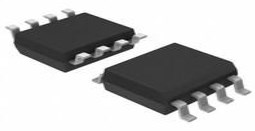 TL081 Single Op-Amp : Pinout, Application and Datasheet
TL081 Single Op-Amp : Pinout, Application and Datasheet23 July 20219444
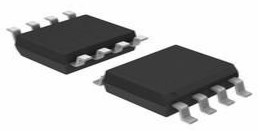 SST25VF020B SPI Serial Flash: Pinout, Equivalent and Datasheet
SST25VF020B SPI Serial Flash: Pinout, Equivalent and Datasheet16 February 20222332
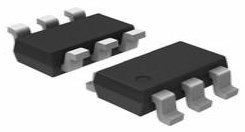 TPS27081ADDCR High-Side Load Switch: Diagram, Pinout, and Datasheet
TPS27081ADDCR High-Side Load Switch: Diagram, Pinout, and Datasheet26 March 20221634
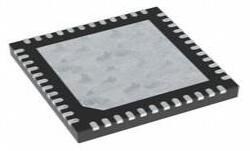 KSZ9031RNXCA Transceiver Full Ethernet 48-QFN: KSZ9031RNXCA VS KSZ9021RNI, and Equivalents
KSZ9031RNXCA Transceiver Full Ethernet 48-QFN: KSZ9031RNXCA VS KSZ9021RNI, and Equivalents15 February 2022528
 A Comparison Article about L293D & ULN2003
A Comparison Article about L293D & ULN200325 April 20226491
 Comprehensive Guide to the ST72F324BK4T3 Microcontroller
Comprehensive Guide to the ST72F324BK4T3 Microcontroller29 February 202485
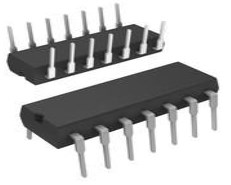 CD40106 HEX Inverter: Pinout, Applications and Datasheet
CD40106 HEX Inverter: Pinout, Applications and Datasheet18 August 20215569
![A Basic Overview of BD139 NPN transistor[FAQ+Video]](https://res.utmel.com/Images/Article/0aacea9e-1010-4f26-8f3b-49fb7e276555.jpg) A Basic Overview of BD139 NPN transistor[FAQ+Video]
A Basic Overview of BD139 NPN transistor[FAQ+Video]05 May 20226621
 BMW CEO: The Car Chip Problem Will Not Be Solved Until 2023
BMW CEO: The Car Chip Problem Will Not Be Solved Until 202312 April 20223632
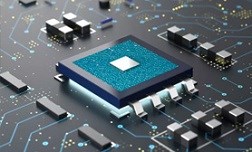 ARM, FPGA, DSP and CPLD: Connection and Difference
ARM, FPGA, DSP and CPLD: Connection and Difference15 March 20226237
 How does the CPU recognize the Code?
How does the CPU recognize the Code?08 August 20221075
 What is Graphics Processing Unit (GPU)?
What is Graphics Processing Unit (GPU)?18 October 20215831
 Leading Fiber Optic Connectors Every Installer Should Know
Leading Fiber Optic Connectors Every Installer Should Know17 July 2025962
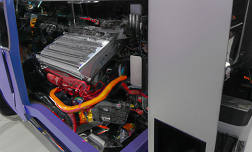 Hybrid Sources Powered Electric Vehicles - Part 2
Hybrid Sources Powered Electric Vehicles - Part 220 March 20232621
 RGB LED: Circuit, Difference and Application
RGB LED: Circuit, Difference and Application25 March 20215527
 A New Way of Thinking About the "Trolley Problem" of Artificial Intelligence
A New Way of Thinking About the "Trolley Problem" of Artificial Intelligence27 May 20221426
Linear Technology/Analog Devices
In Stock
United States
China
Canada
Japan
Russia
Germany
United Kingdom
Singapore
Italy
Hong Kong(China)
Taiwan(China)
France
Korea
Mexico
Netherlands
Malaysia
Austria
Spain
Switzerland
Poland
Thailand
Vietnam
India
United Arab Emirates
Afghanistan
Åland Islands
Albania
Algeria
American Samoa
Andorra
Angola
Anguilla
Antigua & Barbuda
Argentina
Armenia
Aruba
Australia
Azerbaijan
Bahamas
Bahrain
Bangladesh
Barbados
Belarus
Belgium
Belize
Benin
Bermuda
Bhutan
Bolivia
Bonaire, Sint Eustatius and Saba
Bosnia & Herzegovina
Botswana
Brazil
British Indian Ocean Territory
British Virgin Islands
Brunei
Bulgaria
Burkina Faso
Burundi
Cabo Verde
Cambodia
Cameroon
Cayman Islands
Central African Republic
Chad
Chile
Christmas Island
Cocos (Keeling) Islands
Colombia
Comoros
Congo
Congo (DRC)
Cook Islands
Costa Rica
Côte d’Ivoire
Croatia
Cuba
Curaçao
Cyprus
Czechia
Denmark
Djibouti
Dominica
Dominican Republic
Ecuador
Egypt
El Salvador
Equatorial Guinea
Eritrea
Estonia
Eswatini
Ethiopia
Falkland Islands
Faroe Islands
Fiji
Finland
French Guiana
French Polynesia
Gabon
Gambia
Georgia
Ghana
Gibraltar
Greece
Greenland
Grenada
Guadeloupe
Guam
Guatemala
Guernsey
Guinea
Guinea-Bissau
Guyana
Haiti
Honduras
Hungary
Iceland
Indonesia
Iran
Iraq
Ireland
Isle of Man
Israel
Jamaica
Jersey
Jordan
Kazakhstan
Kenya
Kiribati
Kosovo
Kuwait
Kyrgyzstan
Laos
Latvia
Lebanon
Lesotho
Liberia
Libya
Liechtenstein
Lithuania
Luxembourg
Macao(China)
Madagascar
Malawi
Maldives
Mali
Malta
Marshall Islands
Martinique
Mauritania
Mauritius
Mayotte
Micronesia
Moldova
Monaco
Mongolia
Montenegro
Montserrat
Morocco
Mozambique
Myanmar
Namibia
Nauru
Nepal
New Caledonia
New Zealand
Nicaragua
Niger
Nigeria
Niue
Norfolk Island
North Korea
North Macedonia
Northern Mariana Islands
Norway
Oman
Pakistan
Palau
Palestinian Authority
Panama
Papua New Guinea
Paraguay
Peru
Philippines
Pitcairn Islands
Portugal
Puerto Rico
Qatar
Réunion
Romania
Rwanda
Samoa
San Marino
São Tomé & Príncipe
Saudi Arabia
Senegal
Serbia
Seychelles
Sierra Leone
Sint Maarten
Slovakia
Slovenia
Solomon Islands
Somalia
South Africa
South Sudan
Sri Lanka
St Helena, Ascension, Tristan da Cunha
St. Barthélemy
St. Kitts & Nevis
St. Lucia
St. Martin
St. Pierre & Miquelon
St. Vincent & Grenadines
Sudan
Suriname
Svalbard & Jan Mayen
Sweden
Syria
Tajikistan
Tanzania
Timor-Leste
Togo
Tokelau
Tonga
Trinidad & Tobago
Tunisia
Turkey
Turkmenistan
Turks & Caicos Islands
Tuvalu
U.S. Outlying Islands
U.S. Virgin Islands
Uganda
Ukraine
Uruguay
Uzbekistan
Vanuatu
Vatican City
Venezuela
Wallis & Futuna
Yemen
Zambia
Zimbabwe










